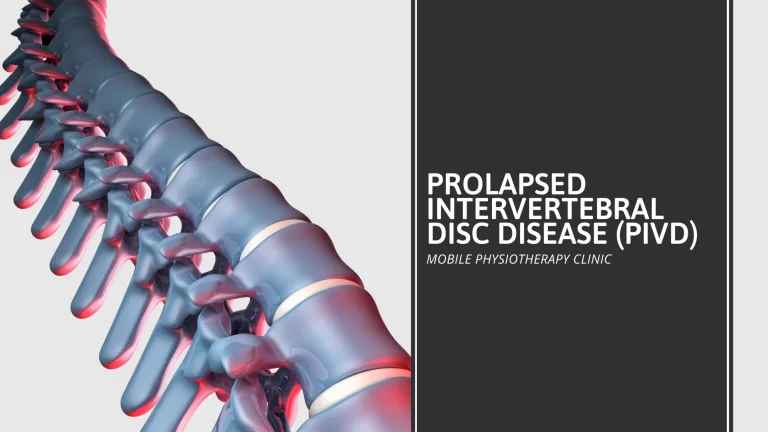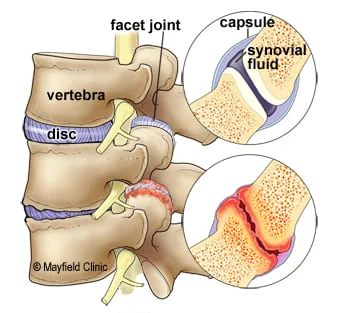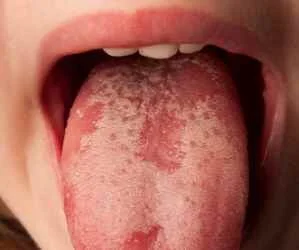Swimming-Induced Pulmonary Eedema
Table of Contents
What is a Swimming-Induced Pulmonary Eedema?
Swimming-induced pulmonary oedema (SIPE) is a form of pulmonary oedema that develops throughout surface or underwater swimming, causing the buildup of fluid in the lungs without water aspiration and pulmonary oedema-related symptoms. Blood fluids leak excessively from the lungs’ small vessels (pulmonary capillaries) into the alveoli.
SIPE is typically caused by exertion in water immersion environments, like swimming and diving. SIPE becomes more widespread as triathlons and open-water swimming events gain popularity. It is found in scuba divers, breathing problems (breath hold) free-diving opponents, combat swimmers, and triathlon competitors.
The causes aren’t fully understood. Some researchers believe SIPE is the leading cause of death among recreational scuba divers, but there is insufficient evidence at this time.
SIPE is a type of hemodynamic pulmonary oedema characterised by an exaggerated rise in pulmonary vascular pressures in response to water immersion, strenuous physical activity, and host factors. Prior research suggests a hydrostatic mechanism for pulmonary oedema, but the pathophysiology is poorly understood.
In healthy people, acute rises in PAWP greater than 18-25mmHg can result in hydrostatic alveolar oedema. Elevated hydrostatic pressures have also been shown to cause microscopic breaks in the membranes of the blood-gas barrier, known as capillary stress failure, which may explain the high prevalence of hemoptysis in SIPE patients.
Thus, hydrostatic pulmonary oedema along with capillary stress fracture is a possible mechanism for the onset of SIPE in susceptible individuals.
Signs and symptoms of swimming-induced pulmonary oedema
SIPE, like other types of pulmonary oedema, is characterised by a cough that can produce frothy or blood-tinged sputum. Symptoms include:
- Shortness of breath out of proportion to the effort expended
- Rapid, heavy, or irregular breathing, or uncontrollable coughing
- Crackles, creaking, or ‘junky’ sensations deep in the chest are caused by breathing effort, which usually worsens with increasing shortness of breath and can result in a panic attack.
- Cough, usually distressful and productive or not of a little pink, frothy, or blood-tinged sputum (hemoptysis).
- The wetsuit may feel like it is impeding your breathing ability.
- The diver suspects their breathing devices are malfunctioning, despite later tests indicating that it is. A diver switching their demand valves, using a buddy’s air supply, or repeatedly purging a rebreather may indicate the onset of SIPE, especially if there is an adequate supply pressure, and may indicate that they have run out of gas or reject a viable alternative gas source.
- A diver may experience difficulty breathing at the surface.
- Confusion or seemingly irrational behavior.
Risk factors of swimming-induced pulmonary oedema
- Pre-existing cardiovascular disease and high blood pressure Hypertension are associated with greater increases in peripheral vasoconstriction during cold exposure. When combined with diastolic dysfunction caused by hypertrophy of the left ventricular walls, the risk increases significantly.
- Immersion in cold water. Immersion in cold water causes peripheral vasoconstriction, which increases afterload on the left ventricle. It most likely also increases preload.
- Stress or exertion while immersed. Stress and exertion increase cardiac work, cause catecholamine release, and elevate cardiac filling pressures at once.
- Female gender.
- Aspirin and fish oil are both antiplatelet agents.
- Excessive hydration before immersion
- Diving requires negative pressure inspiration.
Mechanism
Immersion increases external hydrostatic pressure, causing blood to redistribute from the periphery to the chest, increasing cardiac filling pressures and stroke volume while decreasing total lung capacity. Fluid moves through alveolar capillaries into the alveoli and extravascular lung tissues over time, as is typical in human beings in good health when absorbed.
This is typically counteracted by the release of BNP, which causes sodium and water excretion via the kidney. This condition is slow, so lung water increase is to some extent normal; however, in susceptible people, a faster rate of accumulation causes SIPE symptoms.
The alveoli of the lungs fill with oedema fluid, resulting in dyspnea, coughing, and frothy or bloody sputum. Gas exchange is impaired, and as hypoxia progresses, consciousness may be lost. Divers’ oxygenation may be affected by their breathing gas mix and the partial pressure reduction caused by ascent. In severe cases, hypoxia may result in cardiac arrest and death. Research into the various factors that contribute to an IPO is ongoing.
Potential aggravating factors include:
- Peripheral vasoconstriction and other neuro-humoral alterations brought on by cold water can result in a central shift in blood volume.
- Wetsuits may cause additional extrinsic compression in the extremities.
- A higher pressure in the pulmonary circulation (pulmonary artery hypertension, left ventricular diastolic dysfunction) causes an increase in a pressure gradient throughout the pulmonary capillaries.
- Capillary stress from oxidative or physical injury causes a breach.
- SIPE is believed to be caused by a combination of these factors that take over the body’s ability to adjust, resulting in alveolar flooding.
Diagnosis
- Sudden onset of dyspnea or hemoptysis while or immediately after swimming.
- Hypoxemia is defined as an oxygen saturation of less than 92% or an alveolar-arterial oxygen gradient greater than 30mmHg.
- The chest radiograph indicates an alveolar filled or interstitial pulmonary oedema that disappears at 48 hours.
- There is no history of water aspiration, laryngospasm, or previous infection.
Treatment of Swimming-Induced Pulmonary Eedema
There are currently no randomised trials of SIPE therapy, so the evolving standard of care is based on logic and anecdotal experience. The sudden management of SIPE involves immediately removing the individual from the water, placing them in a warm environment, and removing any constrictive wetsuits. Individualised care may include oxygen, diuretics, and β2 agonists. While SIPE can be fatal, most athletes recover and are symptom-free within 48 hours.
Anecdotally, vasodilators such as dihydropyridine calcium channel blockers and sildenafil have been successfully used to prevent SIPE. There has been recent reporting on the impact of sildenafil in SIPE susceptible subjects. Following the cold-water exercise, the SIPE group’s MPAP and PAWP were higher than those of the controls.
When compared to controls, SIPE-susceptible subjects’ pulmonary artery pressures significantly decreased after taking sildenafil, resulting in comparable MPAP and PAWP. The study’s authors hypothesised that vasodilatation of peripheral veins and pulmonary vessels is probably what causes the sildenafil-induced drop in pulmonary vascular pressures during submerged exercise. Pre-workout sildenafil has been shown in published case reports to prevent the development of SIPE, which is consistent with our experience.
The goal is to educate athletes on modifiable risk factors like cold-water diving, waterproof clothing, salt pills, and pre-race hydration when the athlete does not have hypertension, we suggest consuming 50mg of sildenafil earlier than swimming. If the patient has hypertension, we change the blood pressure medication regimen to include a daily dihydropyridine calcium channel blocker.
The World Anti-Doping Agency does not prohibit either of these medications. Importantly, because we are concerned that PDE-5 inhibitors may increase the risk of seizures caused by central nervous system oxygen toxicity, we do not recommend their use in scuba divers. We regularly suggest participants determine the tolerance of medication in non-race conditions while being actively monitored before using it on race day.
Summary
Swimming-induced pulmonary oedema (SIPE) is a form of pulmonary oedema that occurs during surface or underwater swimming, causing fluid buildup in the lungs without water aspiration. SIPE is more common in triathlons and open-water swimming events. It is characterized by an exaggerated rise in pulmonary vascular pressures due to water immersion, strenuous physical activity, and host factors. The underlying cause is unclear, but hydrostatic pulmonary oedema in combination with capillary stress fracture is a probable cause for SIPE growth in people who are at risk.
SIPE symptoms include shortness of breath, rapid breathing, crackles, cough, difficulty breathing, and confusion. Risk factors for SIPE include pre-existing cardiovascular disease, high blood pressure, immersion in cold water, stress or exertion, female gender, aspirin, and fish oil, excessive hydration before immersion, and diving requires negative pressure inspiration.
Treatment involves immediate removal from the water, placing the individual in a warm environment, and individualized care may include oxygen, diuretics, and β2 agonists. Vasodilators like dihydropyridine calcium channel blockers and sildenafil have been successfully used to prevent SIPE.
FAQs
Swimming-induced pulmonary oedema is the leading cause of triathlon-related emergencies and fatalities. Cold water immersion, female sex, age over 50, and wetsuit compression are all associated risk factors. Pathophysiology is caused by increased central blood pooling, which results in increased pulmonary capillary wedge pressure.
Pre-workout sildenafil has been shown in published case reports to prevent the development of SIPE, which is consistent with our experience. We advise athletes on risk factors that can be changed, such as wearing wetsuits, taking salt tablets, swimming in cold water, and hydrating well before a race.
A chest radiograph of a patient with swimming-induced pulmonary oedema reveals fluffy perihilar infiltrates bilaterally. Patients with SIPE are treated primarily with supportive measures such as removing them from wet and/or cold environments and administering supplemental oxygen.
Although some people who do not have heart disease develop pulmonary edoema, the majority of cases are associated with heart problems. People with heart conditions are at a higher risk if they do not take their medication as prescribed and do not follow their doctor’s nutrition advice.
Shortness of breath or rapid, heavy, or irregular breathing. Uncontrollable coughing. This cough is typically distressing and can produce pink, frothy, or blood-tinged sputum (originating in the lungs or bronchial tubes). Confusion or unreasonable behaviour.
It is critical to seek medical attention, as secondary drowning can be fatal. Depending on the severity, it may be treated with oxygen, antibiotics, or diuretics, all of which can help eliminate fluid from the lungs. In severe cases, mechanical ventilation may require the use of a breathing machine.
References
- Swimming-Induced Pulmonary Edema – American College of Cardiology. (2018, August 14). American College of Cardiology. https://www.acc.org/Latest-in-Cardiology/Articles/2018/08/14/06/49/Swimming-Induced-Pulmonary-Edema
- Swimming-induced pulmonary edema. (2024, February 14). Wikipedia. https://en.wikipedia.org/wiki/Swimming-induced_pulmonary_edema
- Smith, R., Ormerod, J. O., Sabharwal, N., & Kipps, C. (2018, July 1). Swimming-induced pulmonary oedema: current perspectives. Open Access Journal of Sports Medicine. https://doi.org/10.2147/oajsm.s140028
- Grünig, H., Nikolaidis, P. T., Moon, R. E., & Knechtle, B. (2017, August 31). Diagnosis of Swimming Induced Pulmonary Edema—A Review. Frontiers in Physiology. https://doi.org/10.3389/fphys.2017.00652
- Yoder, J. A., & Viera, A. J. (2004, March 1). Management of Swimming-Induced Pulmonary Edema. AAFP. https://www.aafp.org/pubs/afp/issues/2004/0301/p1046.html






